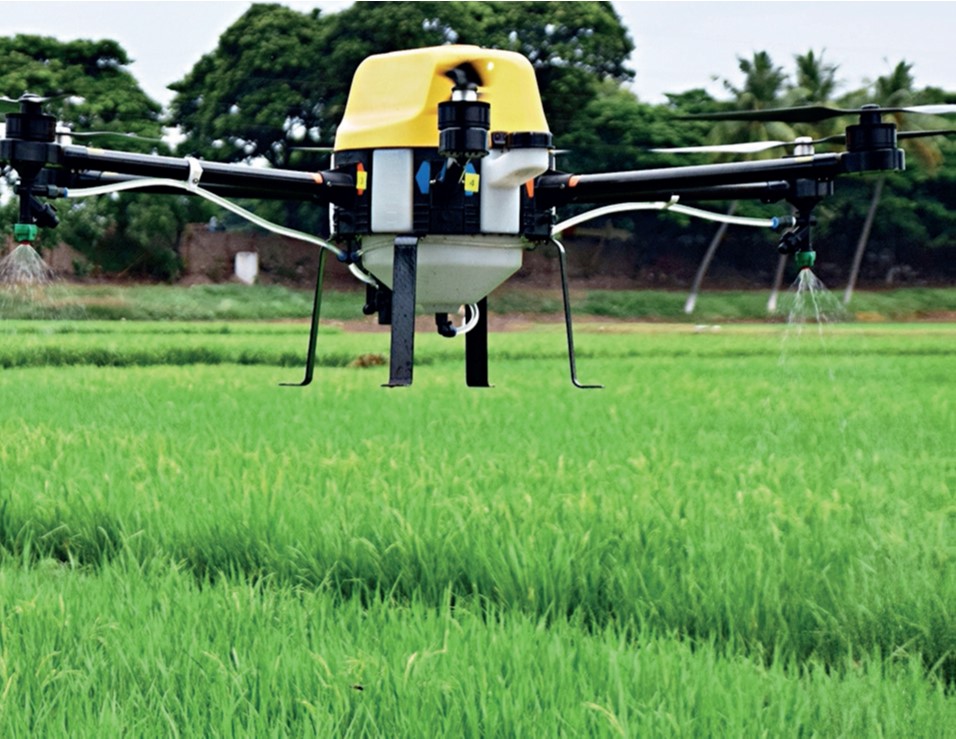India Needs To Leverage New Technologies To Feed Itself And Serve The World
The future of food is unequivocally digital, and the future of digital is inevitably AI (artificial intelligence), researchers from IT For Change had noted in a 2019 paper discussing new technologies in agriculture.
Their observation is not just academic. Nearly seven decades after American computer scientist John McCarthy first introduced the world to the term “artificial intelligence” at the 1955 Dartmouth Conference, AI has evolved multi-fold, making huge strides, offering a slew of solutions for problems across sectors.
Agriculture, humanity’s oldest production activity, is no exception, by any means. But Indian agriculture presents its own, unique challenges. The lack of proper infrastructure and knowhow, faith in conventional styles of functioning, lack of awareness and scarcity of farmer capital being some, while fragmentation of land could also prove to be a hurdle for large-scale implementation of new technologies.
The country, which already accounts for about 18% of the global population, is expected to surpass China by 2023 to become the world’s most populated country. With this comes the pressure to feed that many mouths.
Estimations by the Indian Council of Agricultural Research (ICAR) show that by 2030, demand for pulses, cereals, rice, eggs, fruits, vegetables and milk will be more than twice of what it was in 2000, while the demand for foodgrains is expected to jump by more than 85%.
According to the Prime Minister’s Science, Technology and Innovation Advisory Council (PM-STIAC): “AI expenditure in India is projected to grow with a CAGR of 39% during 2019-2025 to touch $11,781 million by 2025. As per Niti Aayog, by 2035, AI has the potential to add $1 trillion to India’s economy.” Experts and academics say a significant amount of this would be in the agriculture sector. The Centre puts the value of the Indian agri-tech market at an estimated $204 million. This is expected to transform exponentially, especially with the adoption of new AI technologies. And as per the Economic Survey, agriculture’s GDP contribution is likely to be 19.9% in 2020-21, increasing from 17.8% in 2019-20 as the sector exhibited growth even during the Covid-19 pandemic.
Professor AK Sood, the principal scientific adviser to the government, told TOI: “AI can help in efficient and cost-effective resource and yield management. It has a huge potential to be proved as a powerful tool that can help organisations cope with the increasing complexity of modern agriculture. It is high time that collaborative agri-data stacks are created and MSME and large corporations invested in this space. With the right mix of participation from public and private institutions, AI can soon prove to be a boon to the agricultural sector, not just in India but worldwide and can help ensure food security for all.”
The Niti Aayog identifies agriculture as one of the focus areas as part of its national strategy for AI given the fact that it has been seeing a lot of direct applications in farming. The agency predicts that AI-powered solutions can enable farmers to do more with less and improve quality and faster go-to market for crops.
AI for prediction analysis by data management — thousands of field data points can be captured in real-time — is among several uses that experts point to. AI can enable farmers to extract and analyse information such as weather, temperature, water consumption or soil conditions through data collected directly from their fields.
Umakant Soni, chief executive officer, AI & Robotics Technology Park (ARTPARK) at IISc, says: “Among the many applications, AI has potential to address supply-demand mismatch in real-time. A supply-demand engine or predictor that can map supply and demand can reduce this significantly. Data coming in from the government side is not accurate, not updated frequently and is noisy. The private sector has incentives to make data accurate as they are making decisions based on it.”
AI can help farmers achieve higher yields through precision farming. “This can detect crop disease, pests and malnutrition in fields and can help farmers determine whether pesticides and weedicides are to be used by detecting and targeting weeds in the identified buffer zone. This can help in reducing the quantity of pesticides and weedicides used by the farmers,” Preeti Banzal, adviser/scientist G to the government, explains.
It can also aid farmers in developing seasonal forecast models to improve farming accuracy and productivity to ensure the highest possible yields. AI-based natural language translation facilitates issuance and spread of agri-advisories, weather forecasts and early warnings for droughts in multiple vernacular languages.
Artificial intelligence-enabled internet-of-things sensors along with mobile apps can help in precision farming as well as yield and price management. In addition to the topographic data, farmers can use drone-based, AI-enabled cameras to capture and analyse images of their field in real-time to identify potential problems and improvements. The use of image recognition using AI approaches for plant identification, pest infestation and disease diagnosis is also becoming prevalent.

The ICAR, as part of efforts to enhance competitiveness of farming in India and make it a viable, self-sustaining and internationally competitive enterprise, is looking at cyber agro-physical systems. These systems, while integrating the use of sensors with computers, satellite imagery and supercomputing facilities for research, will also help in reducing uncertainty and risk in agricultural operations through AI-enabled farmers’ advisories for critical agricultural operations and climatic events.
A PwC-Ficci analysis shows that several states are serious about AI in agriculture. For instance, Karnataka has partnered with a leading MNC for agricultural produce, price-related information and intelligence using predictive modelling.
“Uttar Pradesh is collaborating with the Bill and Melinda Gates Foundation (BMGF) and the Tata Trust to set up the Indian agritech incubation network at IIT-Kanpur, while Maharashtra has launched the Maha AgriTech project that is aimed at utilising and promoting the application of satellites and drones to solve various agrarian problems,” the analysis reads.
Among other examples are Punjab’s initiative to enable traceability in the potato seed supply chain and pre-immunise it, Telangana’s AI in its agricultural innovation programme and IIT Delhi’s School of Artificial Intelligence.
THE AI POTENTIAL
• Output yield estimates and price forecasts will help farmers obtain maximum profits
• AI sensors can detect weed affected areas to precisely spray herbicides preventing over or under-use of herbicides
• Predictive insights such as timing for sowing for maximum productivity can help farmers reduce impact by weather; aid goal of doubling income
• AI-driven robots can be used to harvest huge volumes faster; be trained on data for specific crop variety, weather conditions & location, taking into consideration byproducts to reduce wastage
• AI and Machine learning can help monitor crop health, diagnose pest/soil defects and nutrient deficiency on a real-time and predictive basis aiding farmers obtain higher yields
• AI-based solutions trained on prior info & classification of plant diseases can help control disease
CHALLENGES OF AI ROLLOUT
• POLICY UPGRADE: Yet-to-mature data governance and data rights regime. Lack of enforcement of data regulations, privacy and transparency
• TRUST DEFICIT & HANDHOLDING GAPS: Risk-aversion and resistance to change, lack of trust in technology and insufficient support of universities and academics in data digitisation and digital agriculture
• LANGUAGE, LITERACY: Language barrier, including high illiteracy rates, and the digital divide. Lack of formal, non-formal and informal education in data engineering, data analysis and data science and insufficient proficiency
• TECH, CONNECTIVITY: Lack of supporting ICT and data infrastructure, which includes data collection, transmission, storage, processing, cleaning and analysis devices, missing historical data and insufficient digitisation and labelling of data. Deficient telecommunication networks and poor internet connectivity, low bandwidth and slow network performance. Limited access to cloud-hosted data, irregular and erratic electricity supply, fragmentation of data and lack of data standards
• FINANCE & INVESTING: Insufficient capital to invest in ICT devices and data infrastructures, insufficient finance for maintenance of existing infrastructures, lack of public investment to bridge gaps in data engineering, data analysis and data science education. Lack of awareness and clarity regarding return on investment in AI systems, and no financial assistance schemes for small farms to adopt and deploy ICT devices and embedded systems
AGRI MATRIX
• India assumes significant importance in terms of acreage of key foodgrains, but productivity is low
• Contribution percentage of key foodgrains in acreage terms is 15%, production contribution is 8.7%
• Rice & maize yields are about one-half of the global yield
• There’s scope for increasing productivity through technologies, but fragmented land among other things is a problem
• Average landholding size in India is about 1 hectare
• About 86% farmers are small & marginal who cultivate 47% of India’s arable land
• About 13% are semi-medium farmers cultivating 43.6% of the land
• About 0.9% large farmers cultivate 9% of the land


